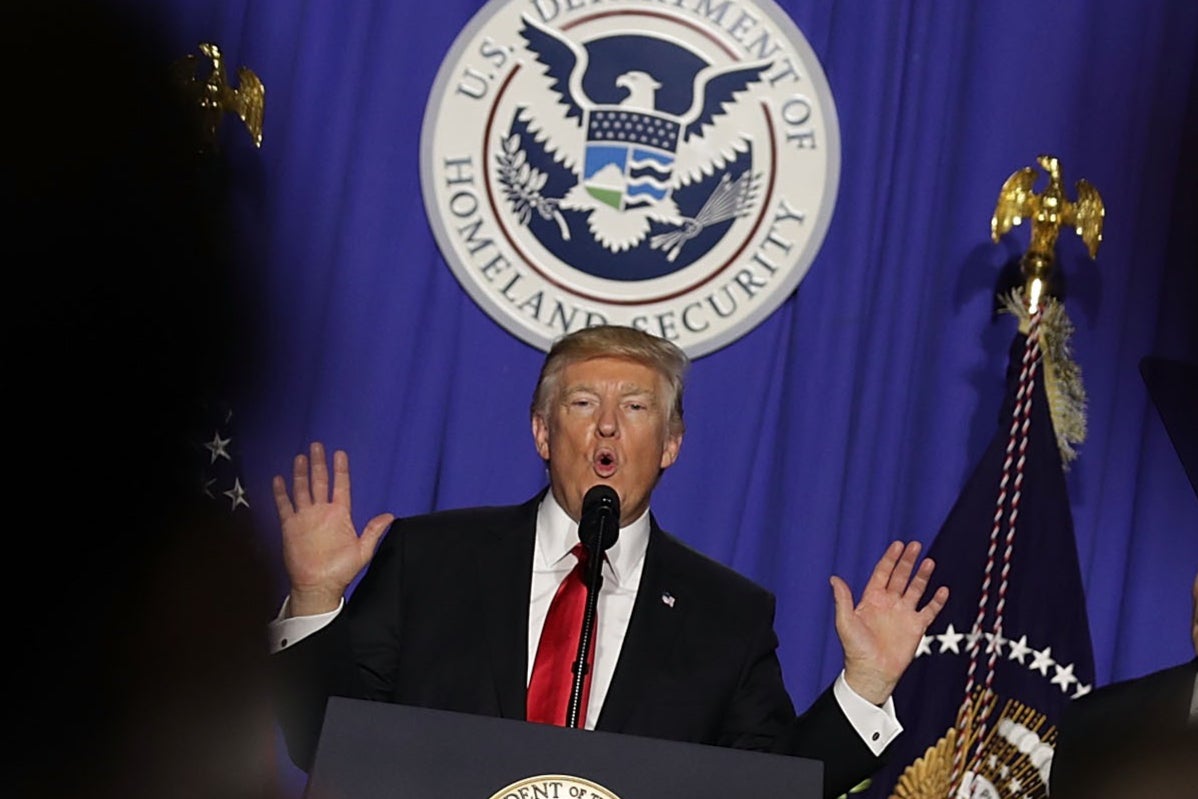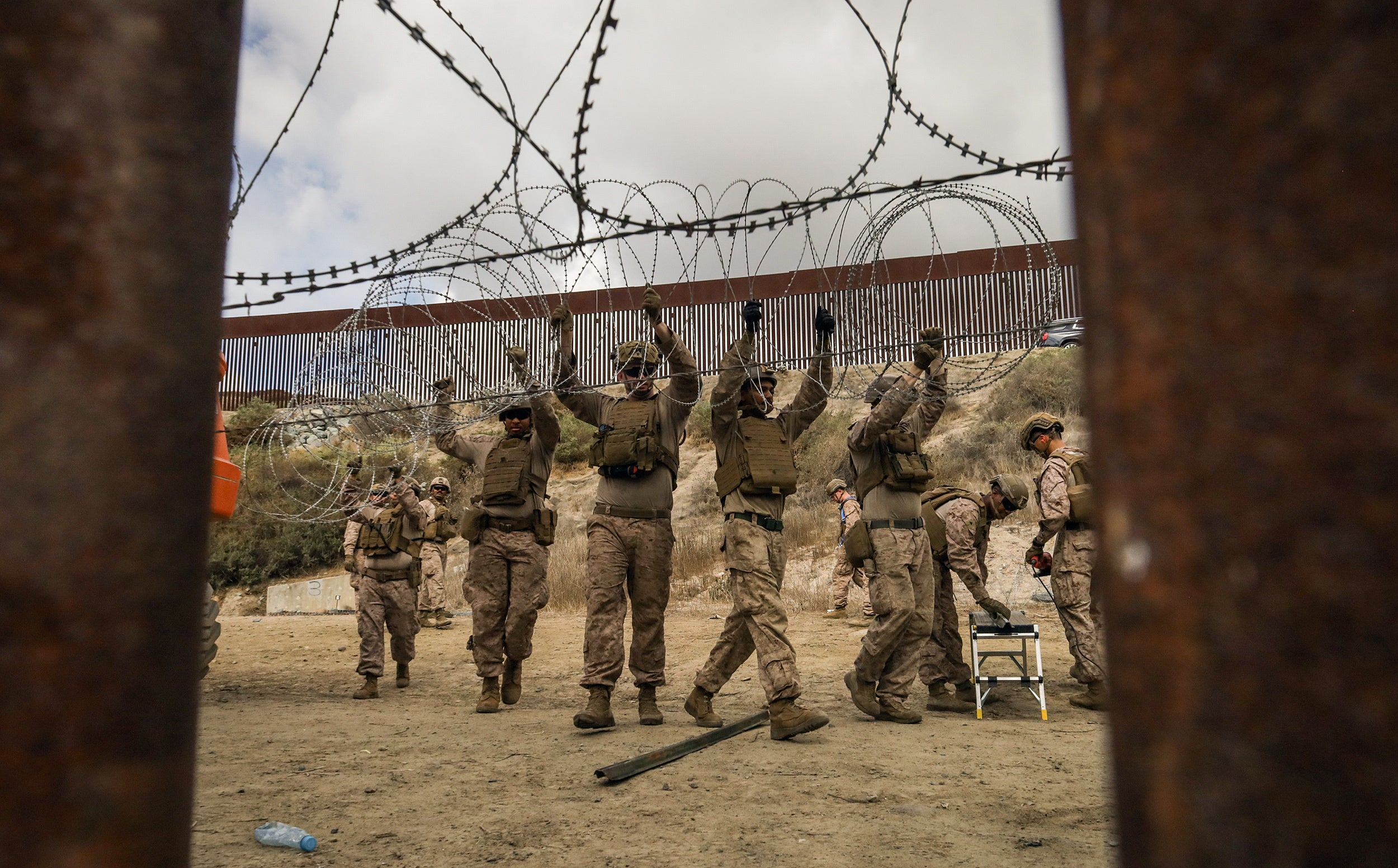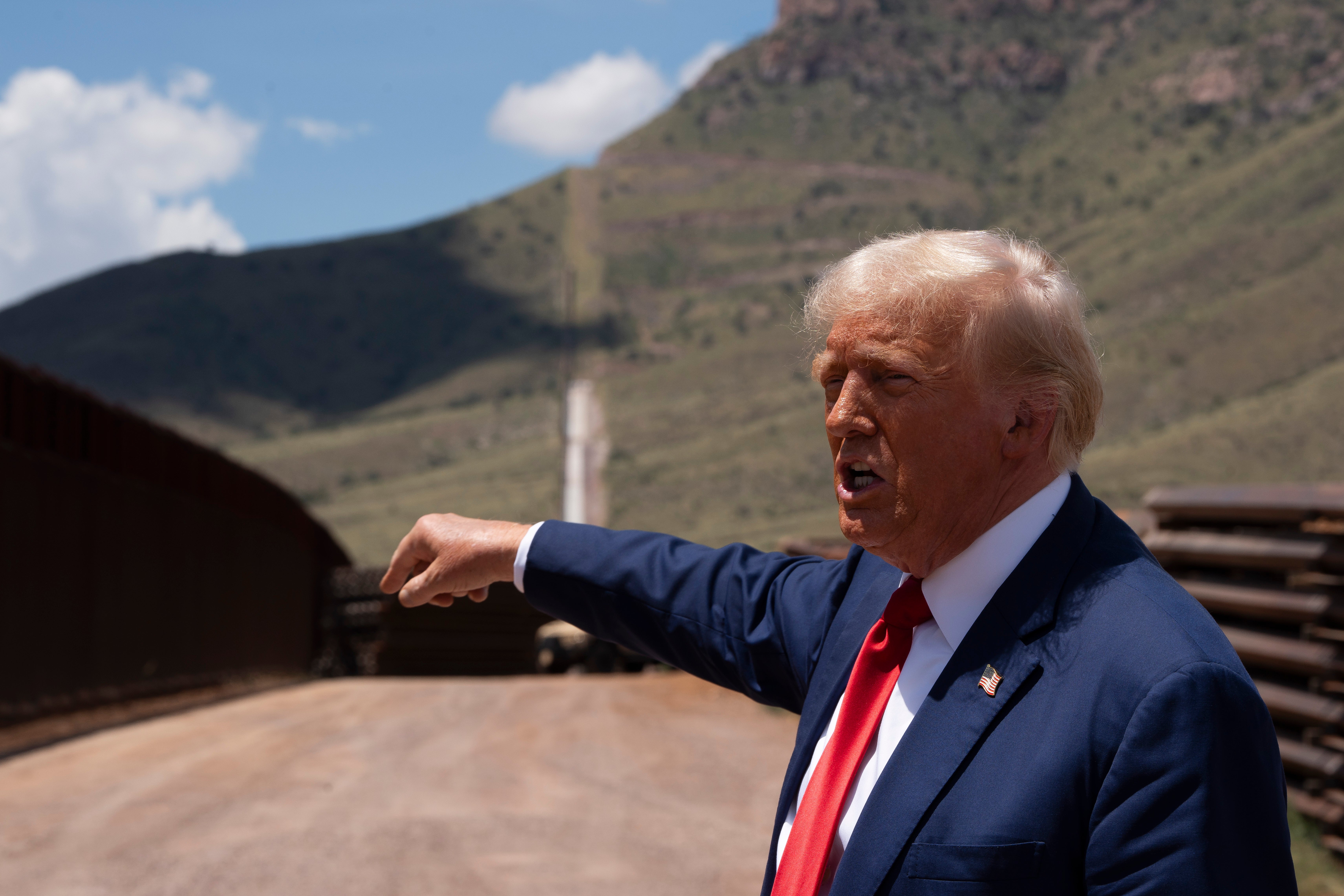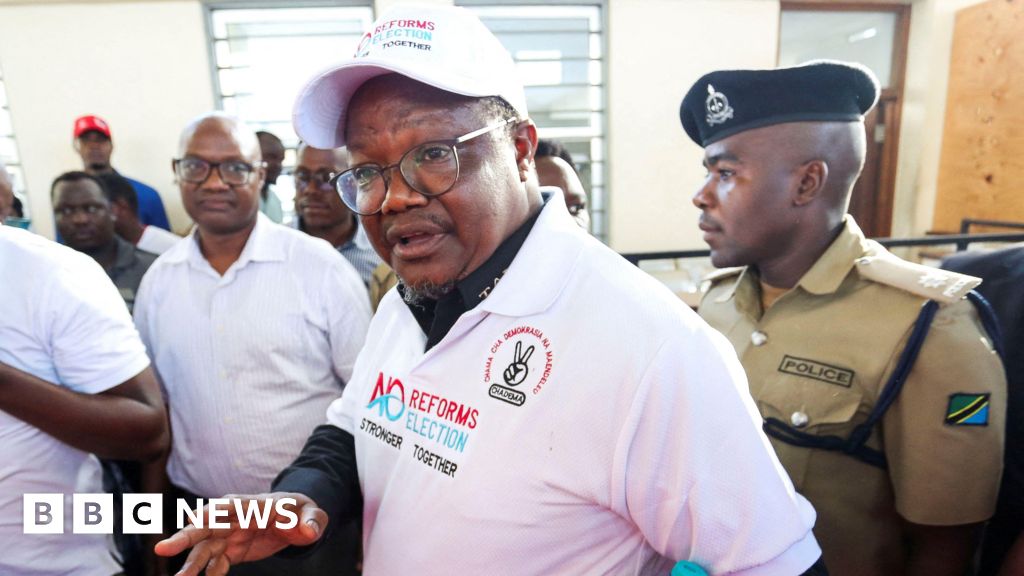Donald Trump has ordered the military to take control of federal lands along the border to deter what the president has deemed an “invasion” of illegal immigrants and cartel activity - a move that continues to push his crackdown on immigration.
“Our southern border is under attack from a variety of threats,” a Friday presidential memo reads. “The complexity of the current situation requires that our military take a more direct role in securing our southern border than in the recent past.”
Thousands of U.S. troops were already at the border before the order, but Friday’s action spells out in more detail some of the new powers Trump wants the military to use along the frontier line, including temporarily detaining migrants and building new barriers. Trump’s order mentions soldiers deploying to the Roosevelt Reservation, a 60-foot-wide strip of federal land running across the borderlands of California, Arizona and New Mexico, and suggests the military will keep expanding its presence going forward.
Critics are likely to argue the new phase of Trump’s border crackdown sees the military crossing legal lines, barring them from domestic law enforcement in all but the most extreme circumstances.
Here’s what you need to know about Trump’s newest order:

What powers will the soldiers have under the new order?
By deploying the military to the border, Trump is essentially turning areas such as the Roosevelt Reservation into military installations.
As a result, soldiers will be able to temporarily detain those migrants who enter these military zones under federal law until agents from the Border Patrol arrive.
Critics argue Trump is carrying out an end run around the longstanding Posse Commitatus Act, which generally bars the military from domestic law enforcement.
“Welp they’re doing the Roosevelt Reservation crazy strategy, giving the military ‘jurisdiction’ over a 60-foot-wide stretch of land from CA to AZ and then claim that migrants are being arrested for ‘trespassing on military property’ thus trying to bypass the Posse Commitatus Act,” Aaron Reichlin-Melnick, a senior fellow at the American Immigration Council, wrote on X.
How big is the deployment at the border now?
There are about 10,000 U.S. troops spread across the border, a vast increase from the 2,500 deployed there under the Biden administration.
Military personnel have used tech such as drones and eight-wheeled armored Stryker vehicles as part of the mission.

What kind of impact are they having on immigration?
Border crossings were already declining from their Biden-era peak of over 370,000 per month when Trump took office, and the Republican’s hard-line stances — deploying troops, canceling temporary migrant protections for those inside the U.S. and pursuing a mass deportation campaign — appear to be driving a drastic decrease in immigrants crossing the border.
Just over 7,000 illegal crossings were recorded in March, per Customs and Border Protection data, down from 28,654 in February.
Is Trump’s border plan legal?
The White House, following the lead of conservative border states such as Texas, has been making a legal argument that U.S. is literally under invasion by migrants and cartels, justifying sweeping emergency powers in response.

In January, Trump declared a national emergency at the border and designated drug cartels as foreign terrorist organizations.
What comes next?
The buffer zone plan is likely only the beginning of an even more stepped-up military presence on the border.
The Friday memo orders the Secretary of Interior to allow the soldiers on lands that haven’t yet been officially been transferred to military control, and mentions the separate ability of the Defense Department to ask state governors to deploy the National Guard to the border.
States such Texas already have thousands of their troops at the boundary line, under Governor Abbott’s controversial Operation Lone Star.

Later this month, the Departments of Defense and Homeland Security will offer recommendations to Trump on whether to invoke the emergency 1807 Insurrection Act, which would allow the deployment of additional troops, who could join in law enforcement operations.
The Trump administration has shown its willingness to use emergency wartime powers for immigration enforcement elsewhere, invoking the scarcely used Alien Enemies Act to summarily deport alleged Venezuelan gang members to El Salvador.
The administration is also reportedly considering using drones to attack Mexican drug cartels on Mexican soil.

 7 hours ago
3
7 hours ago
3







